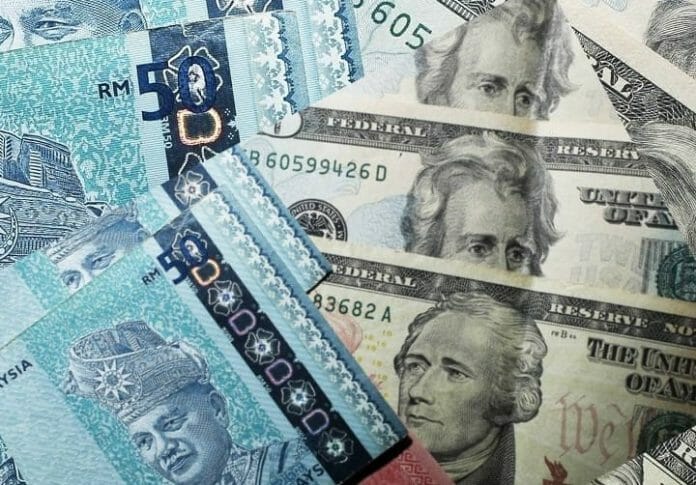The US dollar languished near a seven-month low against other major currencies today, as investors took heart that the Federal Reserve may be nearing the end of its rate-hike cycle and as China’s reopening drove demand for riskier assets.
Markets have grown increasingly doubtful that the Fed will have to take interest rates above 5 per cent to cool inflation, as effects of it aggressive rate increases last year have already been felt in the economy. Investors are now expecting rates to peak just under 5 per cent by June.
Last week’s jobs report showed that while the US economy had added jobs at a solid clip in December, it had also recorded a slowdown in wage growth.
The dollar’s decline pushed the euro to a seven-month peak of US$1.07605 in the previous session. The euro was last 0.04 per cent lower at US$1.0728.
Sterling slipped 0.03 per cent to US$1.2177, after similarly hitting a three-week top of US$1.2209 yesterday and ending the session 0.73 per cent higher.
Against a basket of currencies, the US dollar index =USD edged 0.04 per cent higher to 103.21, after tumbling 0.7 per cent and touching a seven-month low of 102.93 in the previous session.
“The dollar’s big climb down has begun,” said George Saravelos, head of FX research at Deutsche Bank.
China’s rapid reopening also provided another boost towards riskier assets away from the safe haven greenback, with the risk-sensitive Aussie spiking to a more than four-month peak of US$0.6950 in the previous session. It was last 0.04 per cent lower at US$0.6911.
The kiwi steadied at US$0.6373, not far off yesterday’s more than three-week high of US$0.6411. Both antipodean currencies are often used as liquid proxies for the Chinese yuan.
The offshore yuan last bought 6.7757 per dollar, and was edging towards the previous session’s near five-month top of 6.7665 per dollar.
“Hedge funds managers have turned slightly bearish USD following the full reopening in China,” said Tareck Horchani, head of head of prime brokerage dealing at Maybank Securities.
Elsewhere, the Japanese yen rose roughly 0.1 per cent to 131.73 per dollar, still supported by a weakening greenback and the Bank of Japan’s surprise tweak to its yield curve policy late last year.
“What the BOJ did at the end of 2022 just indicates that Mr Kuroda is trying to make the job easier for his successor,” Reuters cited Dong Chen, head of Asia macroeconomic research at Pictet Wealth Management, telling reporters at an outlook briefing. Haruhiko Kuroda, governor of the Bank of Japan, will step down in April.
Brazil’s real snapped its three-day winning run in the previous session and last stood at 5.2546 per dollar, having fallen more than 1 per cent yesterday after supporters of former President Jair Bolsonaro stormed the capital. It had yet to trade as of Asia hours today.
Investors will turn their attention to a speech by Fed Chair Jerome Powell later today and to US inflation data out on Thursday, which could give further clarity on the outlook of the Fed’s rate-hike path.
Ringgit Opens Higher
Earlier, the ringgit opened firmer versus the US dollar on improved demand for the local note backed by solid economic data that show a good recovery from the Covid-19 crisis, including a falling unemployment rate in recent months, said ActivTrades.
At 9 am, the local note rose 20 basis points to 4.3700/3760 against the greenback from Monday’s close of 4.3720/3765.
ActivTrades trader Dyogenes Rodrigues Diniz said although the inflation number in Malaysia had been high at 4.0 per cent in November 2022, it was still lower than inflation in the United States (US), which last read 7.1 per cent for the same month.
“All these numbers point to a favourable economic situation in Malaysia, which should encourage the entry of foreign capital into the country, causing the US dollar-ringgit to fall over the next few months.
“From a technical point of view, if the US dollar-ringgit breaks below the 4.3650 level, it may drop as low as 4.2400 before finding some more important support,” Diniz told Bernama.
Meanwhile, the ringgit traded lower against a basket of major currencies.
It fell against the Singapore dollar to 3.2835/2885 from 3.2793/2832 at Monday’s close and weakened vis-a-vis the Japanese yen to 3.3184/3235 from 3.3009/3045 previously.
The local currency depreciated versus the British pound to 5.3196/3269 from 5.3124/3179 yesterday and eased against the euro to 4.6877/6941 from 4.6636/6684.









